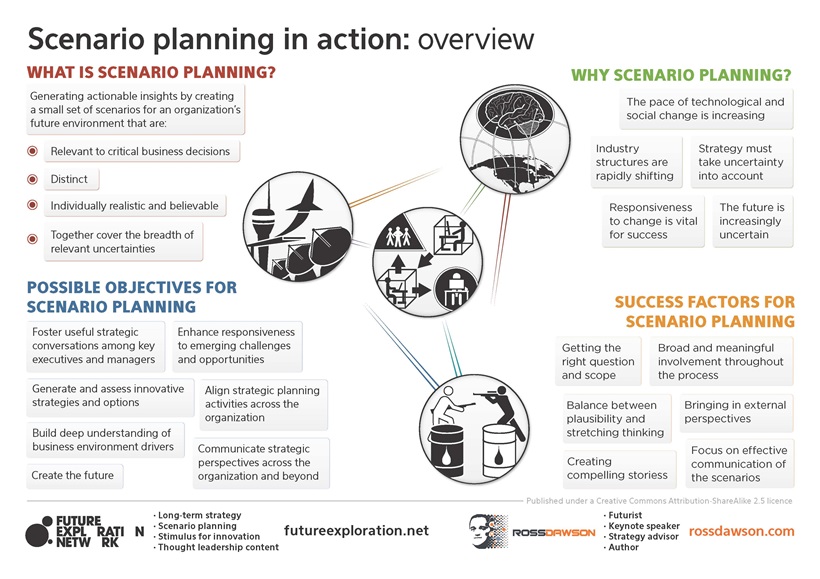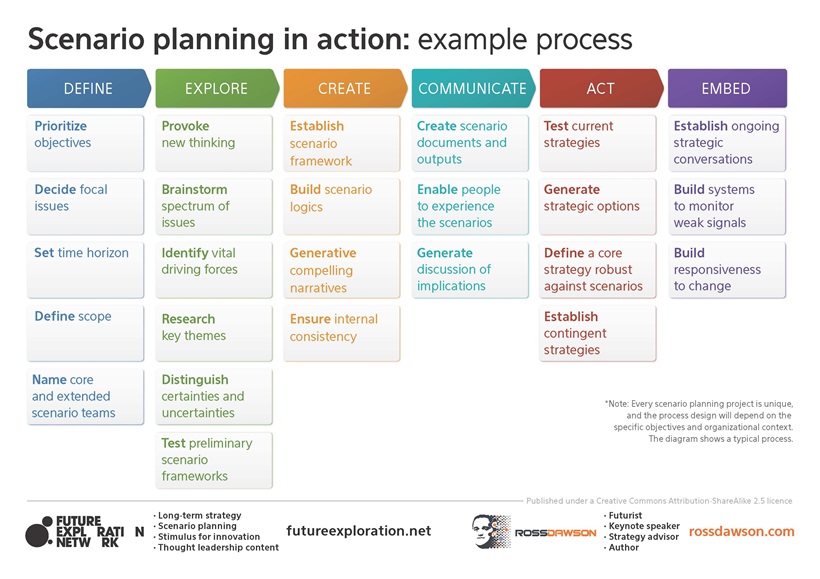Scenario planning in practice in an accelerating world
I have been helping clients implement scenario planning for a quarter century, since 1998, in a very wide variety of contexts.
Therea are situations where scenario planning is more and less applicable. Especially pertinent today, as I have noted:
The greater the uncertainty, the greater the value of scenario planning.
There are many factors that impact the degree of uncertainty in decision-making, including timeframes, industries, information availability, technological context, and many more.
Cycles and secular shifts in uncertainty
Over time there have tended to be cycles in unpredictability and volatilty, often related to economic cycles or geopolitical factors.
Yet there has also been an ongoing secular shift towards greater uncertainty in business, markets, and society.
It is safe to say that in 2024 the predictable timeframe for any business is rather short.
Scenario planning for uncertain times
Scenario planning acknowledges and embraces uncertainty, exploring the fullest scope of possibilities to enable rigorous planning and robust decision-making.
It can be done as a structured process or used in strategic exercises or executive development programs to encourage effective scenario thinking in executives.
My Scenario Planning in Action framework below provides a brief overview of what it is, why to use it, the success factors, and a generic scenario planning process.
The processes and framing used will vary substantially depending on the specific objectives and context. I’ll dig into more detail on some of the variations in subsequent posts.




